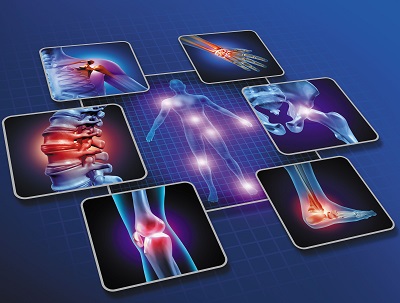
BY KATIE KUEHNER-HEBERT
Having an ergonomically designed warehouse and training workers how to safely perform physical tasks can improve their wellbeing and productivity—as well as potentially minimize workers’ compensation costs.
Indeed, about a third to as much as half of all workers’ comp claims are associated with manual material handling tasks, according to CNA Insurance Co. Moreover, manual material handling is the largest single cause of lost workday injuries. One out of every four work-related injuries happen because someone lifted, carried, pushed or pulled something the wrong way, or lifted beyond his or her capacity.
“With respect to the cause of lost time injuries in the industrial workplace, nothing comes close,” said Jim Galante, director of business development for MHI member Southworth Products Corp. and chair of the EASE Council, an MHI Industry Group.
“Workers’ compensation claims are escalating, causing companies’ insurance premiums to rise and remain elevated for three to five years, even if they have no additional claims during this time,” Galante said.
Claims costs are being exacerbated by the fact that the industrial worker has aged, he said, citing the Bureau of Labor Statistics. About 25 years ago, 27 was the average age of a warehouse worker, but today the average age is 48, and this trend will continue for at least 15 years.
“As workers age, their strength and agility decrease, as does their ability to do physical work,” he said. “They are less flexible and they fatigue more quickly, often resulting in more injuries.”
Another issue exacerbating workers’ comp claims costs is obesity. A Duke University Medical Center analysis found that obese workers filed twice the number of workers’ comp claims, had seven times higher medical costs from those claims and lost 13 times more days of work from work injury or work illness than did non-obese workers.
“Obese people typically don’t have the muscle mass, agility or aerobic capacity needed for many manual material handling tasks,” Galante said. “Engineering interventions make a huge difference by positioning the work to the advantage of the worker.”
Devices that reduce bending, reaching and carrying material not only substantially reduce the possibility of injury, they will also increase efficiency and productivity, he said.
For example, positioners hold pallet loads to a proper height—the ergonomic “magic window” of 30 inches to 40 inches from the floor. Positioners that rotate pallets bring loads close to workers; reducing their walking is key to increasing efficiency.
Another example of an engineering intervention is high hinge tilters, which enable workers to gain access to products at the bottom of containers.
“Picking thousands of small parts are made easy by using tilters—the high hinge causes the container to elevate as it tilts,” Galante said.
Amy Blueter, vice president of operations at MHI member Kinetic Technologies LLC and the EASE Council vice chair, said that more manufacturers are now leveraging exoskeletons, wearables and automation, which reduces the need for workers to reach overhead.
“The use of exoskeletons is growing primarily among big manufacturing companies, but we’re starting to see this gain more steam widespread,” Blueter said. “Moreover, there’s an increase in the use of robotics and automated guided vehicles, which helps to decrease manual tasks and associated injuries and workers’ comp claims.”
Members of the EASE Council are helping companies reduce workers’ comp claims by minimizing the stress of bad ergonomics.
 MHI Solutions Improving Supply Chain Performance
MHI Solutions Improving Supply Chain Performance